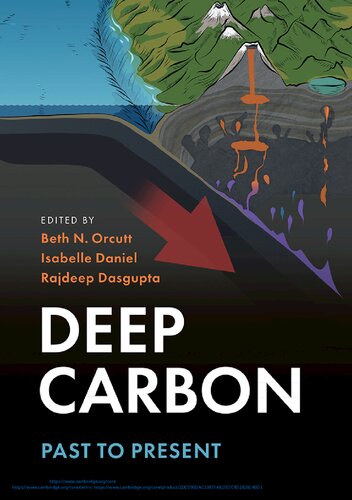Product desciption
Deep Carbon Past To Present Bn Orcutt I Daniel R Dasgupta by B.n. Orcutt; I. Daniel; R. Dasgupta 9781108477499, 9781108677950, 9782019019488, 1108477496, 1108677959, 2019019485 instant download after payment.
Carbon is one of the most important elements of our planet, and 90% of it resides inside Earth’s interior. This book summarizes 10 years of research by scientists involved in the Deep Carbon Observatory, a global community of more than 1200 scientists. It is a comprehensive guide to carbon inside Earth, including its quantities, movements, forms, origins, changes over time, and impacts on planetary processes. Leading experts from a variety of fields, including geoscience, biology, chemistry, and physics, provide exciting new insights into the interconnected nature of the global carbon cycle and explain why it matters to the past, present, and future of our planet. With end-of-chapter problems, illustrative infographics, full-color images, and access to online models and data sets, it is a valuable reference for graduate students, researchers, and professional scientists interested in carbon cycling and Earth system science. This title is also available as Open Access on Cambridge Core at doi.org/10.1017/9781108677950.
Beth N. Orcutt is Senior Research Scientist at Bigelow Laboratory for Ocean Sciences, USA. Her research focuses on understanding microscopic life at and below the seafloor. Having clocked over 600 days at sea on field missions, including dives to the seafloor in the Alvin submersible, she is an expert in ocean exploration. Orcutt has received a Kavli Frontiers in Science Fellowship and the 2018 Geobiology and Geomicrobiology Division Post-Tenure Award from the Geological Society of America.
Isabelle Daniel is Professor of Earth Sciences at the Université Claude Bernard Lyon 1, France. She is also affiliated with the Laboratoire de Géologie de Lyon and chairs the Observatoire de Lyon. Her research focuses on geobiology and minerals, rocks, and fluids under extreme conditions. She investigates serpentinization and serpentine minerals, fluid– rock interactions at high pressure, and microorganisms under extreme conditions. She is a fellow of the Mineralogical Society of America.
Rajdeep Dasgupta is Professor of Earth, Environmental and Planetary Sciences at Rice University, USA. His research focuses on the deep processes of Earth and planetary interiors, which he pursues using geochemical and petrological approaches. He is a recipient of the James B. Macelwane Medal and Hisashi Kuno Award from the American Geophysical Union, the F. W. Clarke Medal from the Geochemical Society, the Faculty Early Career Award from the US National Science Foundation, and the Packard Fellow- ship for Science and Engineering. He is also a fellow of the American Geophysical Union.


